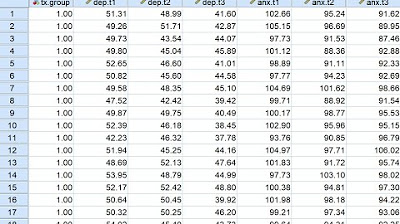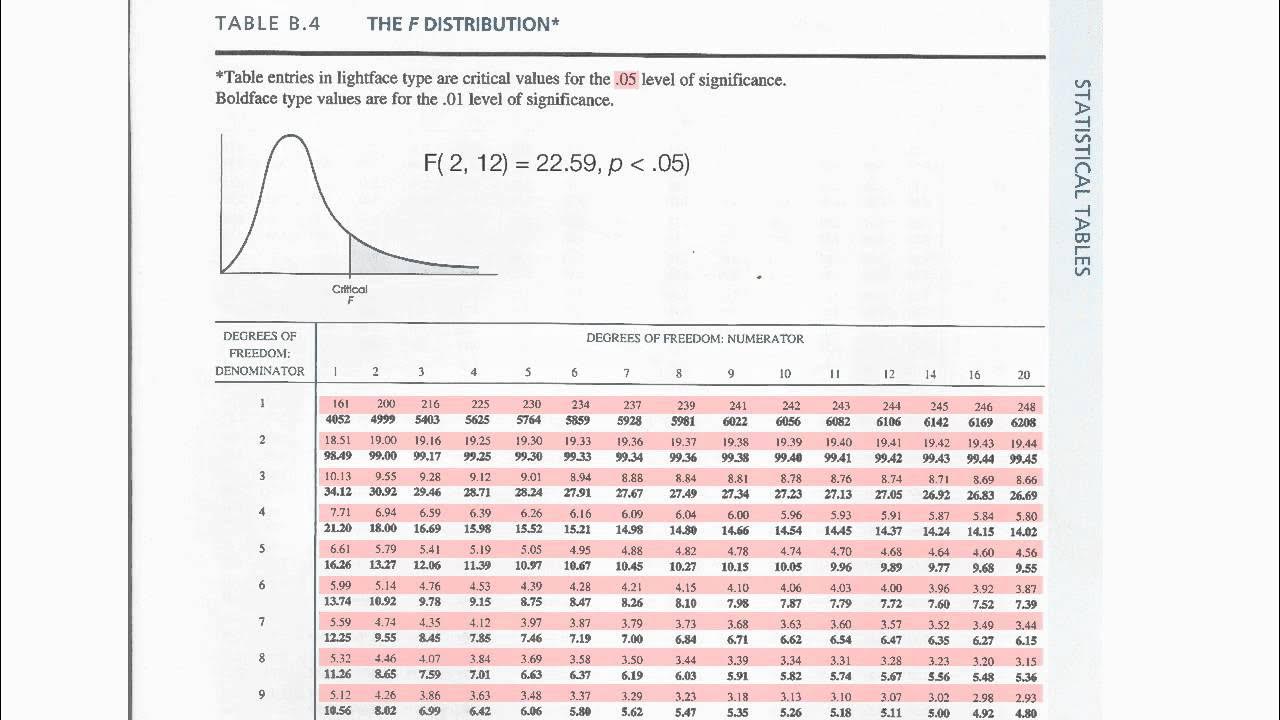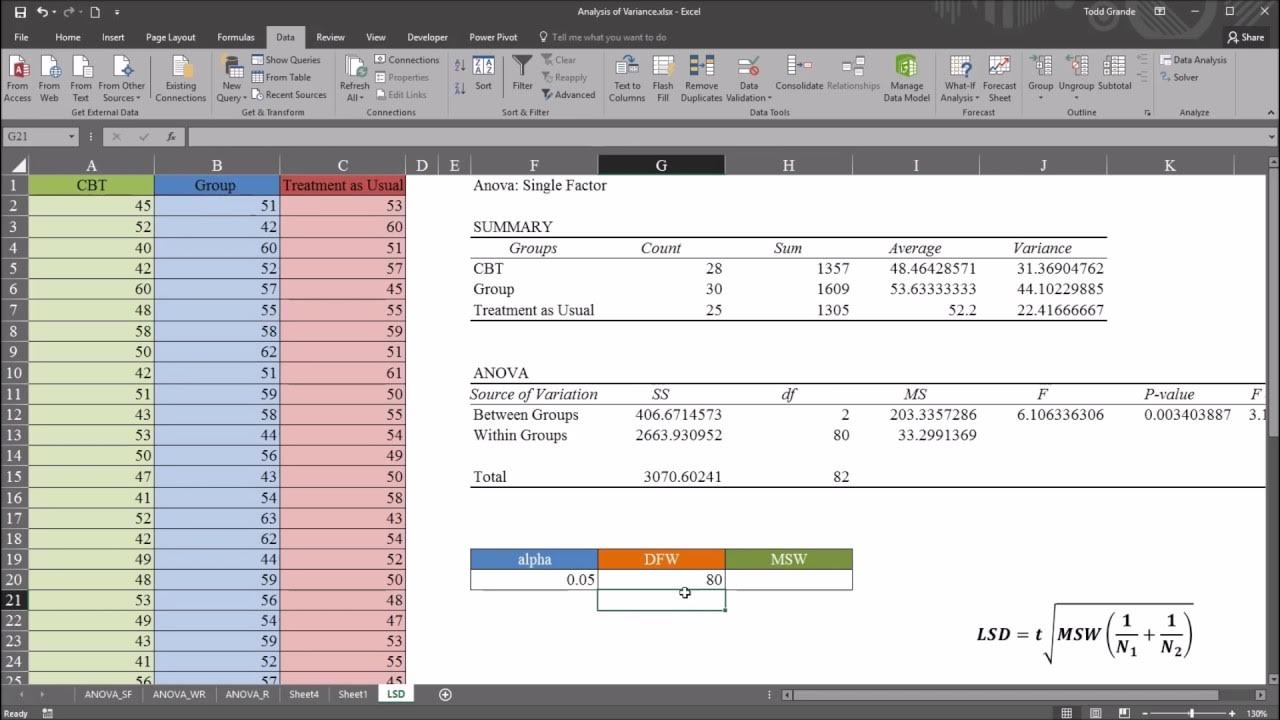Introduction to Two Way ANOVA (Factorial Analysis)
TLDRThis tutorial introduces the concept of two-way ANOVA, also known as factorial analysis, which is used to determine the impact of multiple factors on data variation. The video is part of a playlist covering calculations, interpretation of results, and the use of SPSS and Microsoft Excel for analysis. The example given involves analyzing arithmetic test scores of boys and girls across different age groups to understand the effects of gender and age. The tutorial explains organizing data into a mean table to facilitate calculations and understanding of degrees of freedom, factors, and their interactions. Future videos in the playlist will demonstrate manual calculations, F-ratio computation, and result interpretation, aiming to test the significance of gender, age, and their interaction on student scores.
Takeaways
- 📚 The tutorial introduces the concept of two-way ANOVA, also known as factorial ANOVA, which is used to analyze the impact of two factors on a variable.
- 👦👧 The example given is an arithmetic test administered to boys and girls of different age groups (10, 11, and 12 years old) to determine the influence of gender and age on test scores.
- 🔢 In a one-way ANOVA, the analysis focuses on the average test scores of different age groups, whereas a two-way ANOVA considers both gender and age as factors.
- 📊 The script explains the process of creating a 'mean table' to organize data by gender and age groups, facilitating the calculation of degrees of freedom and understanding of factors.
- 🔄 The two-way ANOVA involves reorganizing data in multiple ways to analyze the effects of each factor (gender and age) and their interaction.
- 📈 The tutorial will cover calculations by hand, using SPSS, and Microsoft Excel for two-way ANOVA in the playlist.
- 📝 The 'mean table' is essential for organizing data into rows and columns representing different gender and age groups, as well as overall averages.
- 🔢 The script mentions calculating sums of squares for each factor (gender and age), their interaction, and within the error, which are crucial for the ANOVA analysis.
- 📉 The total sum of squares is the sum of all individual sums of squares, including the factors, interaction, and error.
- 📚 The playlist includes videos on calculating the F ratio, degrees of freedom, and interpreting the results of the two-way ANOVA.
- 🚫 The null hypotheses to be tested are that gender, age, and their interaction have no significant effect on student scores.
- 📌 The tutorial encourages sharing knowledge and subscribing for more content, indicating the importance of community engagement in learning.
Q & A
What is the main topic of the tutorial video?
-The main topic of the tutorial video is the introduction to two-way ANOVA or factorial analysis.
What is the purpose of a two-way ANOVA?
-The purpose of a two-way ANOVA is to determine the impact of two factors on the variation in a dataset, such as whether gender and age groups affect test scores.
How does a two-way ANOVA differ from a one-way ANOVA?
-A two-way ANOVA is more complex than a one-way ANOVA as it considers the effects of two factors and their interaction, whereas a one-way ANOVA only considers the effects of one factor.
What are the two factors considered in the example given in the script?
-The two factors considered in the example are gender and age groups (10, 11, and 12-year-olds).
What is the significance of organizing data in a table in a two-way ANOVA?
-Organizing data in a table in a two-way ANOVA makes it easier to calculate degrees of freedom, understand the factors, and perform other necessary calculations.
What are the hypotheses tested in a two-way ANOVA?
-The hypotheses tested in a two-way ANOVA are: 1) Gender has no significant effect on student scores, 2) Age has no significant effect on student scores, and 3) The interaction between gender and age has no significant effect on student scores.
What does the script mention about the total sum of squares in a two-way ANOVA?
-The script mentions that the total sum of squares in a two-way ANOVA is the sum of the sum of squares of the first factor (gender), the second factor (age), their interaction, and the error.
What is the next step the tutorial will cover after introducing the two-way ANOVA?
-The next step the tutorial will cover is showing how to make the calculations for a two-way ANOVA by hand.
How does the script suggest viewers engage with the content?
-The script suggests viewers engage with the content by sharing knowledge, showing love on social media platforms, asking questions, and subscribing for more content.
What is the significance of the F ratio in the context of ANOVA?
-The F ratio is used to determine whether to reject or fail to reject the null hypothesis in ANOVA. If the F ratio falls in the rejection region (red area), the null hypothesis is rejected; if it falls in the non-rejection region (green area), the null hypothesis is not rejected.
Outlines
📊 Introduction to Two-Way ANOVA
This paragraph introduces the concept of two-way ANOVA, also known as factorial ANOVA, as part of a larger playlist dedicated to explaining this statistical method in depth. The tutorial sets up a hypothetical scenario involving an arithmetic test given to different age groups of boys and girls to illustrate the use of two-way ANOVA. It contrasts this with one-way ANOVA, explaining that the two-way method involves analyzing the impact of two factors, gender and age, on test scores. The paragraph also outlines the process of organizing data into a mean table, which includes averages for each age and gender group, facilitating the calculation of degrees of freedom and understanding of the factors involved.
🔍 Deep Dive into Two-Way ANOVA Calculations
Building on the introduction, this paragraph delves into the specifics of conducting a two-way ANOVA. It discusses the process of reorganizing data to analyze the effects of each factor—age and gender—separately, as well as their interaction. The paragraph explains the calculation of sum of squares for each factor, the interaction between them, and the total sum of squares. It also touches on the upcoming content in the playlist, which will cover how to perform these calculations by hand, calculate the F ratio, determine degrees of freedom, and interpret the results. The ultimate goal is to test three hypotheses regarding the significance of gender, age, and their interaction on student scores, with the F ratio indicating the decision to reject or fail to reject the null hypotheses.
Mindmap
Keywords
💡Two-way ANOVA
💡Factorial Analysis
💡Arithmetic Test
💡Gender
💡Age Group
💡Degrees of Freedom
💡Sum of Squares
💡F Ratio
💡Null Hypothesis
💡Interpreting Results
💡Playlist
Highlights
Introduction to the concept of two-way ANOVA or factorial analysis.
The tutorial is part of a playlist covering various aspects of two-way ANOVA from manual calculations to software interpretations.
A scenario is presented where an arithmetic test is given to boys and girls of different age groups to determine the impact on test score variation.
Two factors considered in the analysis are gender and age group.
Explanation of the difference between one-way and two-way ANOVA, highlighting the complexity of the latter.
Demonstration of how to calculate and compare averages in a one-way ANOVA setup.
Description of the process to reorganize data for a two-way ANOVA, including calculating the mean for different subgroups.
Creation of a 'mean table' to facilitate the calculation of degrees of freedom and other necessary calculations.
Differentiation between the first and second factors in a two-way ANOVA, with an example of gender and age.
Explanation of how a two-way ANOVA involves reorganizing data in multiple ways for analysis.
The process of calculating sum of squares for the first factor (age), then for the second factor (gender), and their interaction.
Total sum of squares calculation as part of the two-way ANOVA process.
Upcoming tutorial content on manual calculations for two-way ANOVA.
Future videos will cover calculating the F ratio, degrees of freedom, and interpreting results.
Null hypotheses to be tested: no significant effect of gender, age, or their interaction on student scores.
Guidance on how to share knowledge and engage with the content through social media and subscription.
Transcripts
Browse More Related Video

How To... Perform a One-Way ANOVA Test in SPSS

Two-way repeated measures ANOVA in SPSS: one-within, one-between (March 2020)

How to read F Distribution Table used in Analysis of Variance (ANOVA)

Two-way ANOVA in GraphPad Prism

One-Way ANOVA with LSD (Least Significant Difference) Post Hoc Test in Excel

SPSS One-way ANOVA: Post Hoc - Duncan test
5.0 / 5 (0 votes)
Thanks for rating: